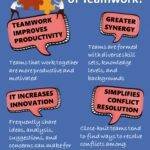
The Facial Expressions Game
This game is about feelings—the ones we understand and the ones we don’t. Despite the fact that facial expressions are a normal part of everyday life, we may not consider them when it comes to advanced forms of communication.
When it comes to proper communication, we all need to work on our self-awareness. Self-awareness plays an important role in communication and influences all of our interactions.
This is another game not limited by group size, so you can play it directly following the preceding game (you just need enough paper and pens for everyone). This is also a quick game that can be played during a break or lunch.
Begin with small groups of about five, and have someone volunteer. Have each person write a feeling on their piece of paper, fold it, and pass it to the volunteer.
Then the volunteer will try to represent this feeling for the group using only facial expressions. Have each other team member attempt to guess at the emotion.
Relying on facial expressions to understand the nuance of emotional communication is a good way to reduce misunderstandings. It also helps to empathize, strengthen relationships and promote group integration.
The topics of this publication: non-verbal communication, interactions, self, emotions, foster relationships, integration, empathy


